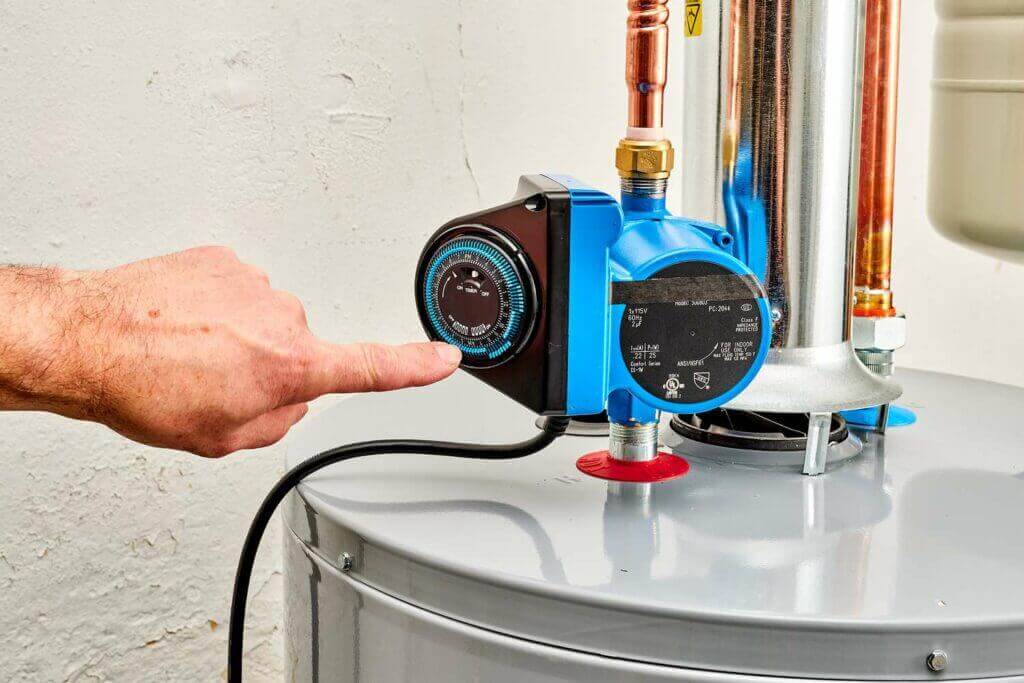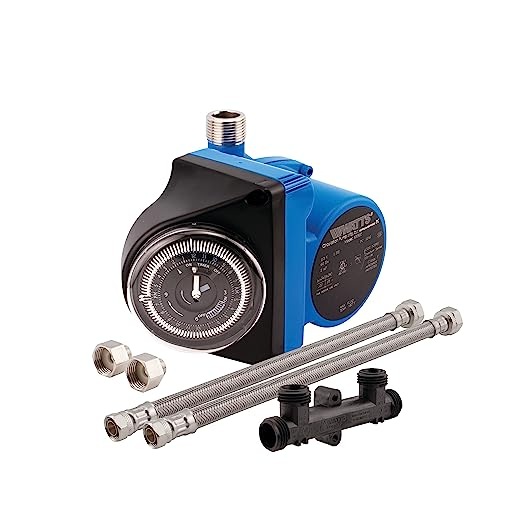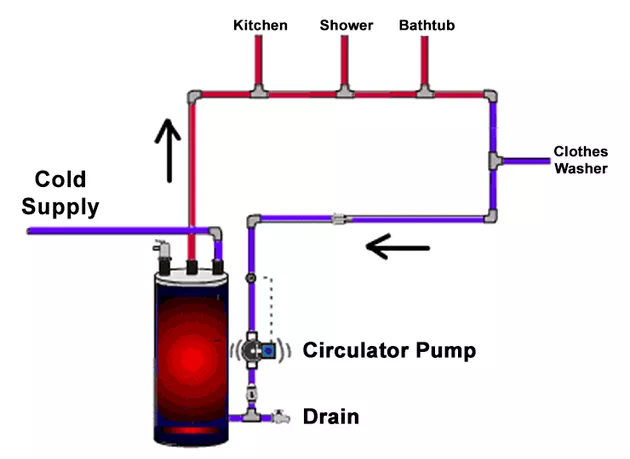Installing a hot water recirculating pump can significantly improve your home’s water efficiency and comfort. This guide will walk you through the process of installing a hot water recirculating pump, explaining the necessary steps, tools, and precautions to ensure a smooth installation. Understanding the components and operation of a hot water recirculating system is crucial for a successful installation.
Understanding Hot Water Recirculating Pumps

A hot water recirculating pump is designed to keep hot water circulating through your pipes so that you have instant access to hot water whenever you need it. This system eliminates the need to wait for water to heat up, reducing water waste and improving convenience.
Types of Hot Water Recirculating Systems
There are two main types of hot water recirculating systems: dedicated recirculation lines and integrated systems.
Dedicated Recirculation Line
This system uses a separate plumbing line to create a loop from the furthest fixture back to the water heater. It ensures a constant supply of hot water in the loop.
Integrated Recirculating System
This system uses the existing cold water line as the return line, making it easier and less expensive to install, particularly in retrofits.
Tools and Materials Needed
Before starting the installation, gather the necessary tools and materials:
- Hot water recirculating pump kit
- Adjustable wrench
- Pipe cutter
- Pipe fittings (as needed)
- Teflon tape
- Screwdriver
- Bucket
- Towels
Steps to Install a Hot Water Recirculating Pump

Right Water Recirculation Pump
Visit: Choosing the Right Water Recirculation Pump for Your Needs
Follow these steps to install a hot water recirculating pump:
1. Turn Off the Water Supply
Before beginning any plumbing work, turn off the water supply to the water heater. This step is crucial to prevent water damage and ensure a safe working environment.
2. Drain the Water Heater
Attach a hose to the water heater’s drain valve and run it to a suitable drainage area. Open the drain valve and let the water heater empty to prevent water spillage during the installation.
3. Install the Pump on the Water Heater
Most hot water recirculating pumps are installed directly on the hot water outlet of the water heater.
Mounting the Pump
- Wrap Teflon tape around the threads of the hot water outlet pipe.
- Attach the pump to the outlet pipe using the provided fittings and an adjustable wrench.
- Ensure all connections are tight to prevent leaks.
4. Connect the Return Line (for Dedicated Systems)
If you are installing a dedicated recirculation line system, connect the return line to the pump.
Connecting the Return Line
- Locate the return line and attach it to the inlet of the recirculating pump.
- Use pipe fittings and Teflon tape to secure the connection.
- Ensure the return line runs back to the furthest fixture in the house.
5. Install the Sensor Valve (for Integrated Systems)
For integrated systems, you need to install a sensor valve under the furthest fixture from the water heater.
Installing the Sensor Valve
- Shut off the water supply to the fixture.
- Disconnect the hot and cold water lines.
- Install the sensor valve between the water lines and the fixture.
- Reconnect the water lines to the sensor valve.
6. Power the Pump
Connect the pump to a power source. Most pumps come with a power cord that plugs into a standard outlet. Ensure the pump is properly grounded to avoid electrical hazards.
7. Turn On the Water Supply
Slowly turn on the water supply to the water heater. Check for leaks at all connection points and tighten any loose fittings as necessary.
8. Test the System
Turn on several hot water fixtures throughout the house to ensure hot water is circulating properly. The pump should activate and circulate hot water through the system.
Benefits of a Hot Water Recirculating System

Installing a hot water recirculating pump offers several benefits:
Water Conservation
By reducing the wait time for hot water, a recirculating pump helps conserve water, making it an environmentally friendly choice.
Increased Comfort
Immediate access to hot water enhances comfort and convenience, particularly during peak usage times.
Energy Efficiency
While the pump uses electricity, the overall energy consumption can be lower due to reduced water heating demands.
Conclusion
Installing a hot water recirculating pump is a valuable upgrade for any home, providing immediate hot water access and improving water efficiency. By following the steps outlined in this guide, you can successfully install a recirculating pump on your water heater, ensuring a consistent supply of hot water and enhancing your home’s comfort and convenience. Whether you choose a dedicated recirculation line or an integrated system, the benefits of a hot water recirculating system make it a worthwhile investment.
